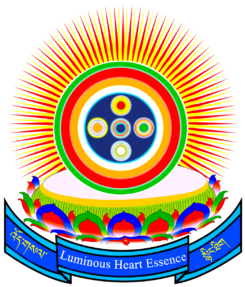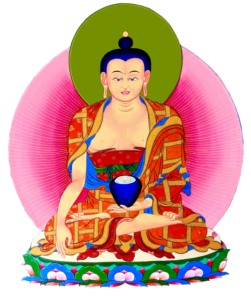 Our Lineage
Our Lineage
Our lineage is rooted in the teachings of Lord Buddha, guiding us toward complete enlightenment—a state free from all suffering. Of the three yanas of Buddhism, we follow Mahayana, and within Mahayana, we practice Vajrayana, also known as the ‘Secret Mantra Vehicle,’ which emphasizes cultivating pure perception and includes powerful methods for accumulating merit and wisdom to swiftly realize buddha nature, or the true nature of reality.
Among the four schools of Tibetan Buddhism, or Vajrayana Buddhism, we belong to the Nyingma school but embrace a Rimé (nonsectarian) approach, inspired by Jamyang Khyentse Wangpo’s vision to honor diverse spiritual traditions. Thus, while devoted to the Nyingma lineage, we hold deep respect for all Buddhist approaches and remain free from sectarian bias.
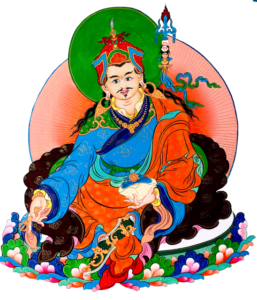 Nyingma
Nyingma
The Nyingma lineage, also known as the Ancient School of Tibetan Buddhism or the ‘Earlier Translation School,’ began with the earliest translations of Buddhist teachings into Tibetan, starting in the 7th century. These translations were carried out by hundreds of translators and scholars such as Ma, Nyak, Bero, Ka, Chog, and Zhang during the period of the Three Forefather Dharma Kings of Tibet—Songtsen Gampo, Trisong Deutsen, and Tri Ralpachen. Notably, this work flourished during the time of the trio known as Khen-Lop-Chö-Sum: the (Abbot/Khenpo) Bodhisattva Shantarakshita, the Master (Acharya/Lobpön) Padmasambhava, and the (Dharma King/Chögyal) Trisong Deutsen. This translation work continued until the time of the Indian translator Smrtijñanakirti in the late tenth century, distinguishing the Nyingma tradition from the ‘New Schools’ or Sarma, such as the Kadam, Kagyü, Sakya, and eventually Geluk schools, which were based on later translations beginning with the great translator Rinchen Zangpo (958–1055). The Nyingma tradition was upheld in Tibet by luminaries like the three teachers of Zur (Zur Me-On Nam-sum), the Omniscient Rongzompa, Longchenpa, the Minling Terchen brothers, and Mipham, as well as in the Six ‘Mother’ Nyingma Monasteries in Tibet and numerous monasteries across the Himalayas, including in Bhutan.
Nyingma teachings are divided into three: the Long Transmission, known as Kama; the Short Transmission, known as Terma; and the Pure Vision teachings, received directly by masters through Pure Vision from deities or gurus, in meditation experiences, or dreams. Unique to the Nyingma school, these teachings are categorized into nine yanas or vehicles.
In addition to the classes of the outer tantras, the Nyingma school includes the three inner tantras of Mahayoga, Anuyoga, and Atiyoga or Dzogchen. While some of these teachings can be found in the Kangyur, the ‘Word of Buddha,’ there is a separate collection known as the Nyingma Gyübum, or the ‘Collected Tantras of the Nyingmapas.’
In brief, the sutras, tantras, and shastras translated from India to Tibet from the time of Thonmi Sambhota in the 7th century up until the era of the great translator Rinchen Zangpo in the 10th century are collectively known as the Nyingma School.
Thus, the Nyingma lineage is considered to possess six great qualities, known as the Sixfold Greatness of the Early Translations:
- The Patrons: The sponsors of these translations were the great emperors of Tibet.
- The Sacred Places of Translation: The translations took place in sacred sites, such as the miraculous temple of Samye.
- The Translators: The translators were emanations, including great figures like Vairotsana, Ka, Chog, Zhang, Ma, and Nyak, among hundreds of others. The earlier translators, being emanations, captured the exact meaning of teachings, making them accessible and impactful for deep understanding. Later translators, however, often translated word-for-word following the Sanskrit sequence, which made the language denser and harder to understand, sometimes diminishing the clarity and directness of the teachings.
- The Panditas / Editors: Those overseeing and editing the translations were buddhas and bodhisattvas dwelling on the great bhumis, including Abbot Shantarakshita, Buddhaguhya, the great master Padmasambhava, and the great pandita Vimalamitra, along with hundreds more.
- The Offerings: Gifts offered to request these teachings were made with gold, measured and offered in a deer’s hoofprint.
- The Authenticity of the Translated Teachings: The teachings were translated at a time when the Buddha’s teachings in India were not yet in decline. Additionally, certain tantras that did not exist in India but were preserved by bodhisattvas, vidyadharas, and dakinis in pure realms or remote parts of Jambudvipa, such as Singala and the western land of Oddiyana, were retrieved, translated, and transmitted by great masters like Padmasambhava and Vimalamitra through miraculous means, bringing many teachings unknown even to the scholars and masters of India to the Tibetans.
This unique quality of the early translations makes the Nyingma lineage distinct and exalted.
Longchen Nyingtik
Among all the Kama, Terma, and Pure Vision cycles of the Nyingma School, the Atiyoga or Dzogchen teachings are regarded as the pinnacle of all vehicles or yanas. Within the three highest tantra teachings, or inner yogas, of the Nyingma School—Mahayoga, Anuyoga, and Atiyoga—Atiyoga is further divided into three classes: the Mind Class, the Expanse Class, and the Pith Instruction Class. The Pith Instruction Class is then further divided into four parts: the Outer Cycle, likened to the body; the Inner Cycle, likened to the eyes; the Secret Cycle, likened to the heart; and the Utterly Secret Unsurpassable, likened to a fully developed person. This cycle of teachings is known as the Nyingtik, or Luminous Heart Essence, and as the Utterly Secret Unsurpassable teachings, which are considered the innermost secret cycle of teachings.
Thus, the Nyingtik teachings are revered as the king of all teachings, the very essence of all tantras, and the mother of all scriptures. They represent the most direct approach for students of the highest capacity and are regarded as the distilled essence of all 64 million verses of the Great Perfection tantras. The Dzogchen teachings were transmitted through three lineages: (1) the direct mind transmission of the Buddhas, from the dharmakaya Samantabhadra to the sambhogakaya Buddha Vajrasattva; (2) the sign transmission of the vidyadharas, beginning with Vajrasattva and continuing to the first human Dzogchen master Garab Dorje, then on to Mañjushrimitra, Shri Singha, and Jñanasutra, eventually reaching Padmasambhava; and (3) the oral transmission through special individuals. In Tibet, the oral transmission of Dzogchen teachings began with Padmasambhava, Vimalamitra, and Vairotsana and has continued in an unbroken lineage to this day.
The Nyingtik teachings are divided into tantras and instructional texts. First are the Seventeen Tantras of Dzogchen, along with the Protective Wrathful Goddess Tantra (Ka-sung Trö-ma’i Gyud) and the Blazing Clear Expanse of Samantabhadri Sun Tantra (Kuntu-zangmo Longsal Bar-wa Nyi-ma’i Gyud), making a total of nineteen tantras. The second category comprises the instructional teachings, which are elucidated and condensed in two primary Nyingtik traditions. The first is the detailed teachings for scholars, transmitted in Tibet by Vimalamitra and known as the Vima Nyingtik, based mainly on the Seventeen Tantras and the Troma Tantra. The second is the profound teachings for yogis, transmitted by Guru Padmasambhava and known as the Khandro Nyingtik, based primarily on the Longsal Barma Tantra.
In fourteenth-century Tibet, all the Dzogchen Nyingtik lineages merged into the great master, Omniscient Longchen Rabjam, who became the lineage holder of both Nyingtik traditions. He composed extensive commentaries, establishing a vast scholarly tradition encapsulated in the Seven Treasuries of Longchenpa, alongside the profound yogic tradition preserved within his work, the Four Parts of the Nyingtik (Nyingtik Yabshyi). This integration became known as the earlier Nyingtik. Approximately 400 years later, Omniscient Jigme Lingpa, recognized as the combined emanation of Vimalamitra, King Trisong Detsen, and Prince Lharje, rediscovered these teaching cycles as a mind treasure. This cycle became renowned as the Heart Essence of the Great Expanse (Long-chen Nying-gyi Thig-le), which Jigme Lingpa received directly from Omniscient Longchenpa in a pure vision.
The Longchen Nyingtik cycle includes various sections, encompassing the preliminary (ngöndro) practices, the main practices of the development and completion stages, and, most importantly, the practice of the Great Perfection (Dzogchen). Together, these practices form a complete path to enlightenment. In the Longchen Nyingtik tradition, after completing the ngöndro, students progress through development stage practices, such as the Three Root Sadhanas, and completion stage practices, including tsa, lung, tikle, tummo, and trulkhor. Finally, if the student is sufficiently prepared, a qualified teacher may impart Dzogchen instructions, which focus on the direct realization of the nature of mind.
From Omniscient Jigme Lingpa, this lineage was passed down to his principal disciples, known as the “Four Jigmes,” who were his “Heart Sons,” and their students, as well as to his successive incarnations such as Do Khyentse Yeshe Dorje, Jamyang Khyentse Wangpo, Patrul Rinpoche, and others. Their incarnations and student lineages have continued to uphold this transmission to the present day.
The teachers of Luminous Heart Essence have received the combined lineages of the masters mentioned above from recent lineage holders such as Dilgo Khyentse Rinpoche, Chatral Rinpoche, Dodrupchen Rinpoche, and many others. Additionally, the affiliated masters of Longnying Chöling Monastery in Bhutan have preserved this lineage for over a century.
The general Nyingtik and Longchen Nyingtik lineage associated with us is as follows:
- Samantabhadra, the Dharmakaya – Vajrasattva, the Sambhogakaya – Prahevajra (Garab Dorje), the Nirmanakaya; the first human master of Dzogpa Chenpo – Mañjushrimitra – Shri Singha – Jñanasutra – Vimalamitra – Guru Rinpoche – King Trisong Detsen, received the Nyingtik teachings from Guru Rinpoche and Vimalamitra – Yeshe Tsogyal (received the Nyingtik teachings from Guru Rinpoche) – Vairotsana – Longchen Rabjam – Rigdzin Jigmé Lingpa, revealer of the Longchen Nyingtik teachings
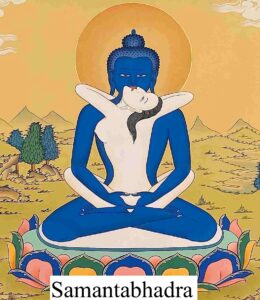
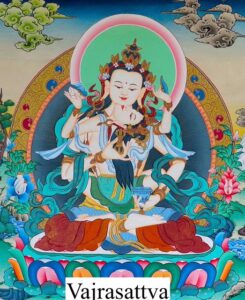





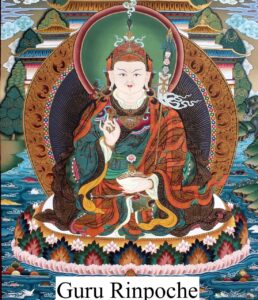
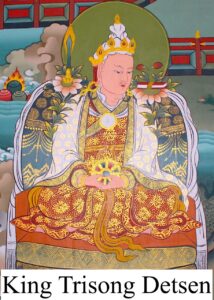

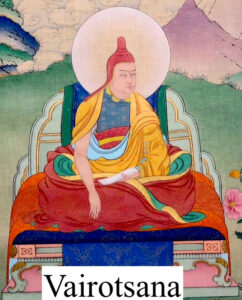
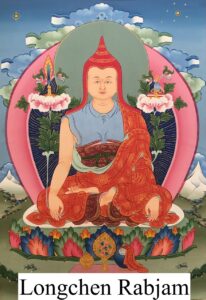

The Four Jikmés who were were Jikmé Lingpa‘s foremost disciples: - Dodrupchen I Jikmé Trinlé Özer, direct disciple of Jigmé Lingpa, who organized and expanded Jigmé Lingpa’s revelations, Jikmé Gyalwé Nyugu, Dola Jikmé Kalzang, & Jigme Kundrol.
- Do Khyentse Yeshe Dorje (Jikmé Lingpa‘s mind incarnation)
- Gyalsé Shenpen Tayé
- Fourth Dzogchen Mingyur Namkhé Dorje
- Dzogchen Khenpo Pema Dorje
- Patrul Jigme Chokyi Wangpo (Jikmé Lingpa‘s speech incarnation)
- Dodrupchen II Jikmé Puntsok Jungné
- Jamyang Khyentse Wangpo (Jikmé Lingpa‘s body incarnation)
- Nyoshul Lungtok Tenpé Nyima
- Orgyen Tendzin Norbu
- Adzom Drukpa Drodul Pawo Dorje
- Dodrupchen III Jikmé Tenpé Nyima
- Lochen Chönyi Zangmo
- Thupten Chökyi Dorje
- Khenpo Kunpal
- Yukhog Chatralwa Chöying Rangdrol
- Khenchen Ngawang Palzang
- Jamyang Khyentsé Chökyi Lodrö
- Dilgo Khyentse Tashi Paljor
- Chatral Sangye Dorje
- Dodrupchen IV
